Today Current Affairs: 29th March 2022 for UPSC IAS exams, State PSC exams, SSC CGL, State SSC, RRB, Railways, Banking Exam & IBPS, etc
Table of Contents
PV Sindhu : Winner Of Swiss Open 2022

P V Sindhu won the Swiss Open 2022 defeating Busanan Ongbamrungphan of Thailand in the finals of the Swiss Open Super 300 badminton tournament held in Basel, Switzerland.
- This is her second title this season as she had earlier in January won the Syed Modi India International.
- She is the second Indian woman to win this tournament, following Saina Nehwal who had earlier won in 2011 and 2012.
- PV Sindhu is a two times Olympics medal winner having won the silver in the 2016 Rio Olympics and the 2020 Tokyo Olympics.
- This is her second finals appearance in the Swiss Open, having been defeated by Carolina Marin in 2021.
25 Years Of BIMSTEC:
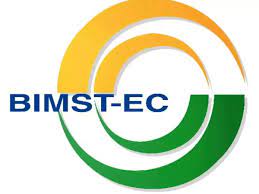
BIMSTEC (Bay of Bengal Multi-Sectoral Technical and Economic Cooperation) completes 25 years of the journey this year that began in Bangkok in June 1997.
- The fifth summit of BIMSTEC will be held in Colombo on March 30.
BIMSTEC:
- In an effort to integrate the region, the grouping was formed in 1997, originally with Bangladesh, India, Sri Lanka and Thailand, and later included Myanmar, Nepal and Bhutan.
- BIMSTEC, which now includes five countries from South Asia and two from ASEAN, is a bridge between South Asia and Southeast Asia. It includes all the major countries of South Asia, except Maldives, Afghanistan and Pakistan.
- BIMSTEC connects not only South and Southeast Asia, but also the ecologies of the Great Himalayas and the Bay of Bengal.
- For India, it is a natural platform to fulfil our key foreign policy priorities of ‘Neighborhood First’ and ‘Act East’.
- For New Delhi, one key reason for engagement is in the vast potential that is unlocked with stronger connectivity.
- Almost 300 million people, or roughly one-quarter of India’s population, live in the four coastal states adjacent to the Bay of Bengal (Andhra Pradesh, Orissa, Tamil Nadu, and West Bengal).
- From the strategic perspective, the Bay of Bengal, a funnel to the Malacca straits, has emerged a key theatre for an increasingly assertive China in maintaining its access route to the Indian Ocean.
- As China mounts assertive activities in the Bay of Bengal region, with increased submarine movement and ship visits in the Indian Ocean, it is in India’s interest to consolidate its internal engagement among the BIMSTEC countries.
New Defence Space Command Agency : Australia
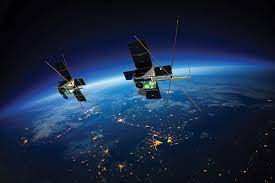
Australia has announced a new Defence Space Command Agency to counter the growing influence of Russia and China in space.
- It will help Australia in developing and advocating space-specific priorities within the government, industry, allies and even international partners.
- The agency will provide training to people to become space specialists, help conduct strategic space planning, and be able to be a part of any developments regarding the refinement of space policy.
- Australia will be setting scientific and space priorities with the agency in place and will be working towards creating an efficient space architecture.
- All the operations of the agency – including design, construction, maintenance – will be within the purview of the standards and limitations of the Defence Ministry of Australia.
India-UAE CEPA: Finalized

The Comprehensive Economic Partnership Agreement (CEPA) between India and the United Arab Emirates (UAE) got finalised.
- India-UAE CEPA was signed on 18th February 2022, during the India-UAE Virtual Summit.
- The Agreement is expected to enter into force on 1st May 2022.
- CEPA provides for an institutional mechanism to encourage and improve trade between the two countries.
- India and the UAE enjoy excellent bilateral relations, which are deep-rooted and historical, sustained and nurtured by close cultural and civilizational affinities, frequent high-level political interactions, and vibrant people to people linkages.
- The India-UAE comprehensive strategic partnership was initiated during the visit of the Prime Minister of India to UAE in India and the UAE have been each other’s leading trading partners.
- From USD 180 million per annum in the 1970s, India-UAE bilateral trade has steadily increased to USD 60 billion in FY 2019-20 making the UAE, India’s third-largest trading partner.
- The UAE is also the second-largest export destination of India.
- The UAE is also the eighth largest investor in India with an estimated investment of USD 18 billion.
- Moreover, India and the UAE have recently entered into a Memorandum of Understanding (MoU) whereby the UAE has committed USD 75 billion towards infrastructure development in India.
- The UAE is an important source of India’s energy supply and a key partner of India in the development of strategic petroleum reserves, upstream, and downstream petroleum sectors.
- The India-UAE CEPA will further cement the already deep, close and strategic relations between the two countries and will create new employment opportunities, raise living standards, and improve the general welfare of the peoples of the two countries.
CEPA:
- It is a kind of free trade pact that covers negotiation on the trade in services and investment, and other areas of economic partnership.
- It may even consider negotiation in areas such as trade facilitation and customs cooperation, competition, and IPR.
- Partnership agreements or cooperation agreements are more comprehensive than Free Trade Agreements.
- CEPA also looks into the regulatory aspect of trade and encompasses an agreement covering the regulatory issues.
- India has signed CEPAs with South Korea and Japan.
Online Voting For Non-Resident Indians:
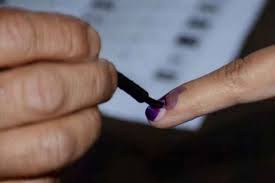
The Union Minister for Law and Justice in response to a question in the Lok Sabha stated that the government is exploring the possibility of allowing online voting for Non-Resident Indians (NRI).
- In 2020, the Election Commission of India (ECI) in a proposal to the Law Ministry proposed to extend the facility of postal ballots to eligible NRIs for the various State Assembly elections to be held in 2021.
- The ECI then, had proposed amending the Conduct of Election Rules, 1961, in order to allow this facility.
- The postal ballots were to be sent to NRIs electronically after which they will send the ballots back, after choosing their candidate, via post.
- It was through the Representation of the People (Amendment) Act, 2010, eligible NRIs who had stayed abroad beyond six months were allowed to vote, but only in person at the polling station where they have been enrolled as an overseas elector.
- Prior to 2010, an Indian citizen who is an eligible voter and was residing abroad for more than six months, would not have been able to vote in elections.
- This was because the NRI’s name was deleted from electoral rolls if he or she stayed outside the country for more than six months at a stretch.
- An NRI can vote in the constituency in his/her place of residence, as mentioned in the passport, is located.
- He/She can only vote in person and will have to produce her passport in original at the polling station for establishing identity.
Koyna Dam
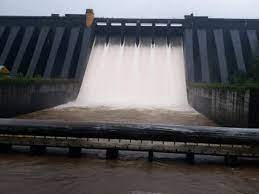
The Comptroller and Auditor General (CAG) of India informed about the delay in the grant of Revised Administrative Approval to an incomplete hydroelectric project in Maharashtra.
- The delay resulted in the funds being blocked for more than six years.
- The Water Resources Department (WRD) of the Maharashtra government accorded Administrative Approval for the construction of 2×40 MegaWatt (MW) hydroelectric project at Koyna Dam Foot on the left bank of the Koyna Dam in 2004.
- The Koyna Dam is the largest dam in Maharashtra. The Dam is located in Koyana Nagar, Satara District.
- It is nestled in the Western Ghats on the state highway between Chiplun and Karad. Koyna Dam is a rubble-concrete dam built on the Koyna River which rises in Mahabaleshwar, a hill-station in Sahyadri mountain ranges.
- The work on Koyna dam was initiated in 1951 and the first turbine started working in 1962.
- At present the stage V of Koyna Hydroelectric Power Project is under construction.
- The main purpose of the dam is to provide hydroelectricity with some irrigation facilities in neighboring areas.
- The Koyna dam supplies water to Paschim Maharashtra as well as to the hydroelectric power to neighboring areas.
- The dam plays a vital role in flood control in monsoon season. The catchment area dams the Koyna river and forms the Shivsagar Lake which is approximately 50 km in length.
- Koyna Wildlife Sanctuary covering an area of around 423.55 km2 was notified in 1985.
- In 2007 Koyna Wildlife Sanctuary along with Chandoli National Park was declared as a part of Sahyadri Tiger Reserve declared by The National Tiger Conservation Authority.
- It is one of the largest civil engineering projects commissioned after Indian independence.
- The Koyna hydro-electric project is run by the Maharashtra State Electricity Board.
Army Version Of Medium Range Surface To Air Missile:
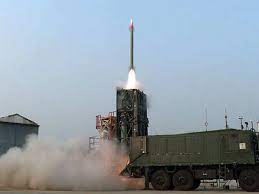
The Defence Research and Development Organisation (DRDO) conducted two successful flight tests of the Army version of Medium Range Surface to Air Missile (MRSAM) at the Integrated Test Range, Chandipur, off the coast of Odisha.
- The tests were part of the live firing trials against high-speed aerial targets. The first launch was to intercept a medium-altitude long-range target and the second launch was for providing capability of a low-altitude short-range target.
- The maiden test of the Medium Range Surface to Air Missile (MRSAM) for the Indian Army was conducted in 2020.
MRSAM:
- Army Variant is a surface to air missile developed jointly by DRDO, India and Israel Aerospace Industries (IAI), Israel for use by the Indian Army.
- It consists of a command and control post, multi-function radar and mobile launcher system.
- MRSAM is a high response, quick reaction, vertically launched supersonic missile, designed to neutralize enemy aerial threats – missiles, aircraft, guided bombs, helicopters.
- Supersonic missiles exceed the speed of sound (Mach 1) but they are not faster than Mach-3.
- It is used by the Army, Navy and Air Force as different variants.
- In May 2019, Indian Navy, DRDO and IAI conducted the maiden co-operative engagement firing of the naval version of the MRSAM.
- It is a land based variant of the Barak Air and Missile Defence System (AMD).
- India buys Barak AMD from Israel, it was designed and developed by Israel to protect its economic zones and strategic facilities from various threats.
- The missile’s management system uses the radar to track and correctly identify the target, calculates the distance from it and gives all the information to the Commander for a decision to be made on interception.
- The missile itself is 4.5 metres in length with a weight of around 275 kg.
- It is equipped with fins and canards to stabilise its flight and provide it manoeuvrability.
- The missile is powered by a solid propulsion system coupled with a thrust vector control system.
- It can engage multiple targets upto a range of 70 km.
35th Surajkund International Mela:
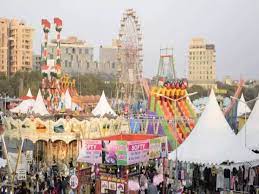
The 35th Surajkund International Crafts Mela 2022 is being held from 19th March, 22 to 4th April, 2022 in Faridabad, Haryana.
- This fair is held every year in the month of February, however, the schedule was revised this year due to the Coronavirus.
- The annual fair in Faridabad was last held in 2020.
- The Mela is organized by the Surajkund Mela Authority & Haryana Tourism in collaboration with Union Ministries of Tourism, Textiles, Culture and External Affairs.
- The Mela was initiated in 1987 to promote the pool of skilled artisans, who used indigenous technology, but were suffering due to the cheaper machine-made imitations.
- The fair was upgraded to an international level in 2013.
- The Surajkund Mela showcases the richness and diversity of the handicrafts, handlooms and cultural fabric of India, & is the largest crafts fair in the world.
- Jammu & Kashmir is the ‘Theme State’ and Uzbekistan is the “Partner Nation” for the year 2022.
Space Economy:

A collaboration between two premier research and educational institutions in Thiruvananthapuram has shed light on India’s “space economy”.
- According to researchers from the Centre for Development Studies (CDS) and the Indian Institute of Space Science and Technology (IIST), the size of India’s space economy, is estimated at a figure of ₹36,794 crore (approximately $5 billion) for the financial year 2020-21.
- The estimated size, as a percentage of the GDP, has slipped from 0.26% in 2011-12 to 0.19% in 2020-21, they found.
- Space applications accounted for the major chunk of this evolving economy, constituting 73.57% (₹27,061 crore) of it in 2020-21, followed by space operations (₹8,218.82 crore or 22.31%) and manufacturing (₹1,515.59 crore or 4.12%).
- The study also found that the space budget as a percentage of the GDP slipped from 0.09% in 2000-01 to 0.05% in 2011-12, and has remained more or less at that level since then.
- In relation to GDP, India’s spending is more than that of China, Germany, Italy and Japan, but less than of the U.S. and Russia.
ODF Plus Villages:

India has crossed a milestone of 50 thousand open defecation-free (ODF) Plus villages.
- ODF plus village is defined as “a village which sustains its Open Defecation Free (ODF) status, ensures solid and liquid waste management and is visually clean.”
- Among the top performing States are Telangana with 13 thousand 960 ODF Plus villages followed by Tamil Nadu and Madhya Pradesh.
- Swachh Bharat Mission Grameen Phase-II was launched in February 2020 with the aim to ensure that all villages in the country can declare themselves as ODF Plus by the end of 2024.
- The mission towards becoming ODF Plus has several components including biodegradable waste management including the GOBARdhan Scheme, Grey water management, Plastic waste management and Faecal sludge management.
- ODF Plus villages have been divided into three categories, Aspiring, Rising, and Model, to showcase their progress.
Prasthan Offshore Security Exercise:
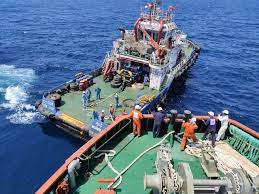
Prasthan’ is an offshore security exercise that was conducted in Mumbai’s Offshore Development Area (ODA) on 23rd March 2022. This exercise was conducted under the aegis of the Western Naval Command’s Headquarters.
- This exercise is conducted every six months.
- This exercise was led by the Indian Navy.
- The participants of this exercise were from the Coast Guard, Indian Air Force, Mumbai Port Trust, ONGC, Customs, Jawahar Lal Nehru Port Trust, Mercantile Marine Department, state fisheries department, and the Marine Police.
- This exercise was conducted to refine the response and standard operating procedures (SOPs) to various contingencies in Mumbai’s Offshore Defence Area.
- On the B-193 platform of ONGC which is located to the west of Mumbai, this exercise was conducted.
- This exercise is very important to ensure offshore security.
- This exercise also aims to strengthen and integrate the efforts being made by all maritime stakeholders who are involved in the defence of the country’s offshore.
- Various simulations like bomb explosion, terrorist intrusion, search and rescue, casualty evacuation, major fire, oil spills, man overboard, and mass evacuation were exercised.
- This recently conducted exercise provided all the stakeholders with an experience for assessing their combat and respond readiness.
Minority Status For Hindus In Some States:
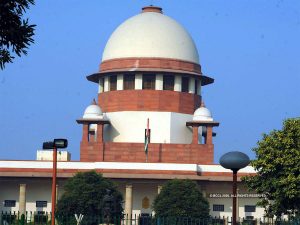
A plea has been filed in the Supreme Court seeking minority status for Hindus in Mizoram,Nagaland, Manipur, Meghalaya, Arunachal Pradesh, Punjab, Lakshadweep, Ladakh, Kashmir etc.
- Hindus were a minority in 10 states as per the 2011 Census.
- Therefore, they are not able to avail the benefits of schemes meant for minorities.
- Scrap the National Commission for Minority Education Institution Act, 2004: Section 2(f) of NCMEI Act confers power to the Centre to identify and notify minority communities in India.
- Therefore, it gives unbridled power to the Centre and is “manifestly arbitrary, irrational, and offending”.
- Violation of Fundamental Rights: Denial of benefits to the “real” minorities and the “arbitrary and unreasonable” disbursements under schemes meant for them to the absolute majority infringe upon their fundamental rights (Articles 14 and 21).
- Citing Article 30 of the Constitution, the plea said that minorities whether based on religion or language shall have the right to establish-administer educational institutions of their choice.
- States too have the power to declare any religious or linguistic community, including Hindus, as ‘minority’.
- Matters concerning whether followers of Hinduism, Judaism, Bahaism can establish and administer educational institutions of their choice in the said states and those related to their identification as minority within the state may be considered at the state level.
- Minority welfare schemes are for underprivileged students and economically weaker sections of the minority community and are not for everyone belonging to the minority community.
- These schemes are only enabling provisions so as to achieve inclusiveness and therefore cannot be held to suffer from any infirmity.
- Several state governments have given minority status to some communities. These include:
- Maharashtra government has notified ‘Jews’ as a minority community within the state.
- The Karnataka government has notified Urdu, Telugu, Tamil, Malayalam, Marathi, Tulu, Lamani, Hindi, Konkani and Gujarati languages as minority languages within the state of Karnataka.
Hike In Prices Of Around 800 Essential Drugs: NPPA

The National Pharmaceutical Pricing Authority (NPPA) has announced a hike in prices of around 800 essential drugs from 1 April. These drugs are included in the National Essential List of Medicine (NELM).
- The rise in drug prices works out at around 10.76% based on the Wholesale Price Index (WPI)
- The clause 16 of Drugs Price Control Order 2013, allows NPPA to revise the ceiling price of scheduled formulations as per the annual wholesale price index (WPI) for the preceding calendar year on or before 1 April of every year and notify the same on the first day of April every year.
National List of Essential Medicines (NLEM):
- Under the provisions of Drug Prices Control Order, 2013, only the prices of drugs that figure in the National List of Essential Medicines (NLEM) are monitored and controlled by the regulator, the National Pharmaceutical Pricing Authority.
- Essential medicines are those that satisfy the priority healthcare needs of the majority of the population.
- The primary purpose of NLEM is to promote rational use of medicines considering the three important aspects i.e. cost, safety and efficacy.
About NPPA:
- NPPA was constituted by the Government of India in 1997 as an attached office of the Department of Pharmaceuticals (DoP), Ministry of Chemicals & Fertilizers as an independent Regulator for pricing of drugs and to ensure availability and accessibility of medicines at affordable prices.
- It was made to fix/revise prices of controlled bulk drugs and formulations and to enforce price and availability of the medicines in the country, under the Drugs (Prices Control) Order, 1995-2013 (DPCO).




